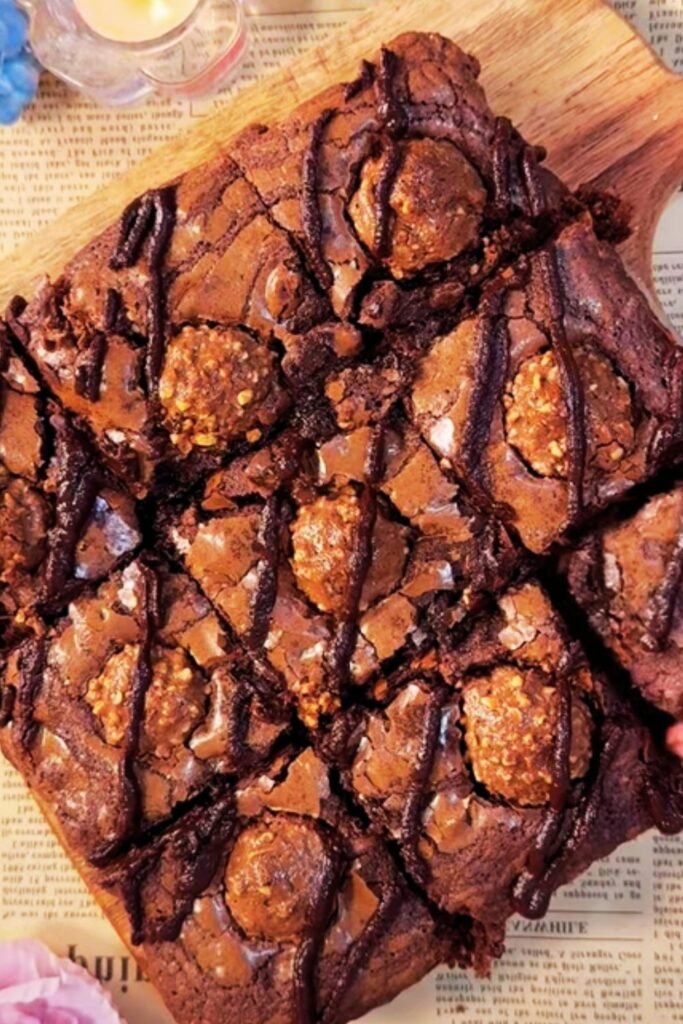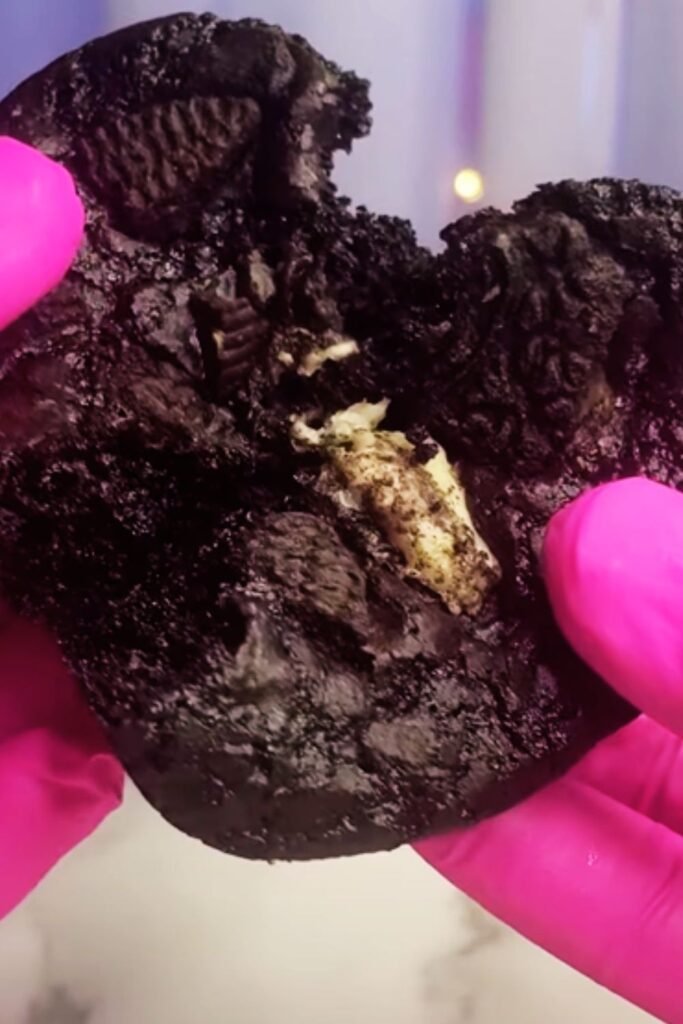I’ve been experimenting with matcha-infused desserts for years, and nothing quite captures my heart like these stunning matcha crinkle cookies. These emerald gems combine the earthy sophistication of ceremonial-grade matcha with the nostalgic comfort of traditional crinkle cookies. When I first attempted this fusion, I was amazed by how the powdered sugar coating creates beautiful snow-capped peaks against the vibrant green cookie base, resembling a winter landscape dotted with jade hills.
The beauty of matcha crinkle cookies lies not just in their striking appearance, but in their complex flavor profile. Each bite delivers a gentle bitterness balanced by sweetness, creating a sophisticated treat that appeals to both matcha enthusiasts and newcomers alike. I’ve served these at dinner parties where guests couldn’t stop asking for the recipe, and I’ve packed them in lunch boxes where they disappear faster than any other homemade treat.
Understanding Matcha: The Heart of These Cookies
Matcha: Finely ground powder made from specially grown and processed green tea leaves, prized for its vibrant color and umami-rich flavor profile.
Ceremonial Grade Matcha: The highest quality matcha powder, stone-ground from the youngest tea leaves, offering the most refined taste and brightest color.
Culinary Grade Matcha: A more affordable option suitable for baking, with a slightly more robust flavor that holds up well to other ingredients.
Umami: The fifth taste sensation, characterized by a pleasant savory quality that adds depth and complexity to sweet applications.
When I started working with matcha, I quickly learned that not all matcha powders are created equal. The quality dramatically affects both the color and taste of your final cookies. I always recommend investing in at least culinary-grade matcha for baking projects like these cookies.
Essential Ingredients and Their Roles
My perfected matcha crinkle cookie recipe relies on carefully balanced ingredients, each serving a specific purpose in creating the ideal texture and flavor.

| Ingredient | Quantity | Purpose | Substitution Notes |
|---|---|---|---|
| All-purpose flour | 2 cups | Structure and body | Can substitute up to 1/4 cup with almond flour |
| Matcha powder | 3 tablespoons | Flavor and color | Use culinary or ceremonial grade |
| Baking powder | 2 teaspoons | Leavening agent | Creates the signature crackled surface |
| Salt | 1/2 teaspoon | Flavor enhancement | Balances sweetness and enhances matcha |
| Unsalted butter | 1/2 cup | Fat content and richness | Room temperature is crucial |
| Granulated sugar | 3/4 cup | Primary sweetness | Creates tender texture |
| Brown sugar | 1/4 cup | Moisture and chewiness | Adds depth of flavor |
| Large eggs | 2 | Binding and structure | Room temperature works best |
| Vanilla extract | 1 teaspoon | Flavor complement | Pure extract recommended |
| Powdered sugar | 1/2 cup | Coating and appearance | Creates the signature crinkled look |
The ratio of matcha to flour took me several attempts to perfect. Too little matcha results in pale cookies with muted flavor, while too much creates an overpowering bitterness that masks the cookie’s sweetness. I’ve found that three tablespoons provides the ideal balance for both visual impact and taste.
Step-by-Step Preparation Method
My method for creating perfect matcha crinkle cookies has evolved through countless batches, and I’m excited to share these refined techniques with you.
Preparation Phase
I always begin by organizing my workspace and bringing ingredients to room temperature. Cold butter and eggs can create texture issues that affect the final product. I set these items out about an hour before I plan to start baking.
Dry Ingredient Preparation
- Sift together flour, matcha powder, baking powder, and salt
- Whisking these ingredients ensures even distribution and prevents matcha clumps
- I use a fine-mesh sieve for the smoothest texture
Wet Ingredient Assembly
- Cream butter with both sugars until light and fluffy (approximately 4-5 minutes)
- Add eggs one at a time, beating well after each addition
- Incorporate vanilla extract during the final mixing stage
The Mixing Process

The key to successful matcha crinkle cookies lies in proper mixing technique. I’ve learned that overmixing develops too much gluten, resulting in tough cookies, while undermixing creates uneven texture and appearance.
- Creaming Stage: I beat the butter and sugars until the mixture becomes noticeably lighter in color and increases in volume. This process incorporates air, creating the tender texture we desire.
- Egg Integration: Adding eggs gradually prevents the mixture from breaking or curdling. I beat each egg until fully incorporated before adding the next.
- Flour Incorporation: I add the dry ingredients in two additions, mixing just until combined. The dough should hold together without being overworked.
Chilling and Shaping
Chilling Requirements
- Refrigerate dough for at least 2 hours or overnight
- Properly chilled dough holds its shape better during baking
- Cold dough creates more pronounced cracks in the finished cookies
Shaping Technique
- Roll dough into 1.5-inch balls using slightly damp hands
- Roll each ball thoroughly in powdered sugar
- Space cookies 2 inches apart on lined baking sheets
The powdered sugar coating serves multiple purposes beyond appearance. It creates a barrier that helps the cookies maintain their shape while allowing the characteristic cracks to form as the cookie expands during baking.
Baking Techniques for Perfect Results

My oven runs slightly hot, so I’ve learned to adjust accordingly. I recommend using an oven thermometer to verify your actual temperature, as this dramatically affects baking times and results.
Baking Parameters
- Temperature: 350°F (175°C)
- Time: 10-12 minutes
- Position: Center rack for even heating
- Doneness indicators: Edges set, centers slightly soft
I never overbake these cookies. The centers should still appear slightly underdone when I remove them from the oven, as they continue cooking on the hot pan for several minutes after removal.
Troubleshooting Common Issues
Through my baking journey, I’ve encountered and solved numerous challenges with matcha crinkle cookies.
| Problem | Cause | Solution |
|---|---|---|
| Pale green color | Low-quality matcha or insufficient amount | Use higher-grade matcha, increase quantity |
| Bitter taste | Too much matcha or poor-quality powder | Reduce matcha or invest in better quality |
| Cookies spread too much | Warm dough or insufficient flour | Chill dough longer, check flour measurement |
| No cracking pattern | Insufficient powdered sugar or over-chilled dough | Apply more coating, let dough soften slightly |
| Dense texture | Overmixing or too much flour | Mix gently, measure flour accurately |
| Uneven color | Poor matcha distribution | Sift dry ingredients thoroughly |
Storage and Serving Suggestions
Proper storage maintains the cookies’ texture and prevents the matcha flavor from deteriorating. I store my matcha crinkle cookies in airtight containers at room temperature for up to one week. For longer storage, I freeze them for up to three months, separating layers with parchment paper.
Serving Recommendations
- Pair with hot green tea for an authentic Japanese experience
- Serve alongside vanilla ice cream for temperature contrast
- Include in cookie gift boxes for their visual appeal
- Complement with fresh strawberries or other seasonal fruits
Nutritional Information and Variations
| Nutrient | Per Cookie (Makes 24) | Daily Value % |
|---|---|---|
| Calories | 145 | 7% |
| Total Fat | 4.2g | 6% |
| Saturated Fat | 2.6g | 13% |
| Cholesterol | 25mg | 8% |
| Sodium | 95mg | 4% |
| Total Carbohydrates | 25g | 8% |
| Dietary Fiber | 0.8g | 3% |
| Sugars | 16g | – |
| Protein | 2.1g | 4% |
| Antioxidants | High | – |
Creative Variations I’ve Tested
- White Chocolate Matcha: Add 1/2 cup white chocolate chips to the dough
- Matcha Almond: Replace 1/4 cup flour with almond flour and add almond extract
- Double Matcha: Dust finished cookies with additional matcha powder
- Matcha Sandwich Cookies: Fill two cookies with matcha buttercream
The Science Behind Perfect Crinkles
Understanding the science helps me achieve consistent results every time I bake these cookies. The crinkled appearance results from the interaction between the dough’s structure and the powdered sugar coating.
As the cookies bake, the dough expands and the surface stretches. The powdered sugar coating remains relatively stable, creating fault lines where the expanding dough breaks through. This process requires the right balance of moisture, fat, and leavening agents.
The matcha powder contributes to this process by absorbing moisture and affecting the dough’s pH level. This interaction influences how the cookies spread and crack, making proper matcha incorporation crucial for achieving the desired appearance.
Advanced Tips for Matcha Mastery
After perfecting my basic recipe, I’ve discovered several advanced techniques that elevate these cookies from good to extraordinary.
Temperature Control: I’ve learned that room temperature significantly affects the final product. On hot days, I chill my dough longer and work in a cooler kitchen when possible. Cold weather requires less chilling time but may necessitate slightly longer baking periods.
Matcha Quality Testing: I always taste my matcha powder before incorporating it into recipes. High-quality matcha should have a sweet, grassy flavor without excessive bitterness. If my matcha tastes harsh or overly bitter, I reduce the quantity or blend it with a milder variety.
Batch Consistency: I’ve developed a system for ensuring consistent results across multiple batches. I weigh my ingredients rather than relying solely on volume measurements, and I time each step to maintain consistency in mixing and chilling periods.
Questions and Answers
Q: Can I use matcha powder from the Asian grocery store for these cookies? Yes, grocery store matcha works well for baking applications. While it may not have the refined flavor of ceremonial grade matcha, it provides good color and taste for cookies. I recommend tasting it first to gauge the bitterness level and adjusting the sugar accordingly.
Q: Why do my cookies turn brown instead of staying green during baking? Browning typically occurs due to excessive heat or overbaking. Matcha is sensitive to high temperatures, so I recommend checking your oven temperature with a thermometer and reducing baking time if necessary. Additionally, using fresh, high-quality matcha helps maintain color stability.
Q: Can I make the dough ahead of time and freeze it? Absolutely! I frequently prepare the dough up to three months in advance. I shape the cookies, coat them in powdered sugar, and freeze them on baking sheets. Once frozen solid, I transfer them to freezer bags. They can be baked directly from frozen, adding 1-2 extra minutes to the baking time.
Q: What’s the best way to measure matcha powder accurately? I always sift matcha powder before measuring to eliminate clumps, then spoon it lightly into my measuring spoon. Matcha can compact significantly, so I avoid packing it down. For the most accurate results, I weigh the matcha when possible – three tablespoons equals approximately 18 grams.
Q: My cookies didn’t crack properly. What went wrong? Insufficient cracking usually stems from inadequate powdered sugar coating, over-chilled dough, or underdeveloped dough structure. Ensure you roll each cookie ball thoroughly in powdered sugar, and let extremely cold dough sit at room temperature for 5-10 minutes before baking.
Q: Can I substitute the all-purpose flour with gluten-free alternatives? I’ve successfully used gluten-free flour blends in this recipe, though the texture differs slightly from traditional versions. I recommend using a blend that includes xanthan gum for better structure. The cookies may spread less and have a more tender crumb, but they maintain their delicious matcha flavor.
Q: How can I intensify the matcha flavor without making the cookies bitter? Instead of simply adding more matcha powder, I recommend using higher-quality matcha or incorporating matcha extract if available. You can also try adding a small amount of matcha salt to enhance the overall flavor profile without increasing bitterness.
Q: What’s the ideal humidity level for making these cookies? High humidity can affect both the dough consistency and the powdered sugar coating. On particularly humid days, I add an extra tablespoon of flour to compensate for moisture absorption, and I work more quickly when coating the cookies to prevent the powdered sugar from dissolving.
These matcha crinkle cookies represent more than just a delicious treat – they’re a bridge between traditional American baking techniques and Japanese flavor traditions. Every time I make a batch, I’m reminded of why I fell in love with baking in the first place: the joy of creating something beautiful and delicious that brings people together. Whether you’re new to matcha or a longtime enthusiast, these cookies offer a perfect introduction to the wonderful world of Japanese-inspired desserts.